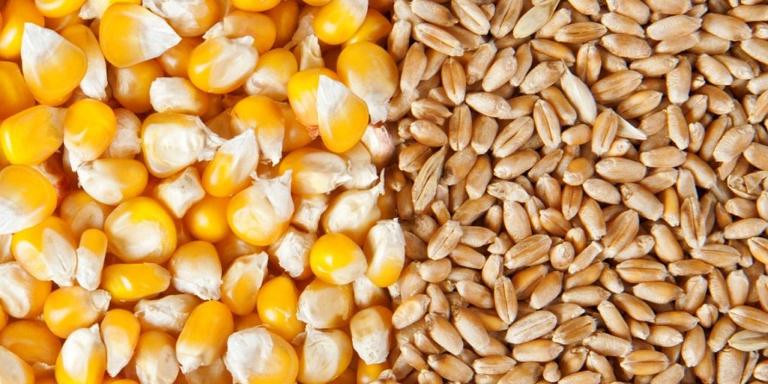What are the agricultural products grown in Zimbabwe?
Located in the south of Africa, Zimbabwe does not border the ocean and is surrounded by the Republic of South Africa, Zambia, Mozambique and Botswana. Zimbabwe’s export products: Tobacco, gold, cotton, nickel, diamonds, ferroalloys, sugar cane, jewelry. Hydroponic farming is practiced in Zimbabwe. The good thing about hydroponics is that it saves 90% of water.
The most commonly produced cereals in Zimbabwe are maize, millet and wheat. Other important crops include cotton, peanuts, cassava, sugar beet, tea and coffee. Zimbabwe has a diverse agricultural sector that produces a wide range of agricultural products. The country’s agricultural industry plays a vital role in the economy and supports both subsistence farming and commercial agriculture. Here are some of the key agricultural products grown in Zimbabwe:

- Maize: Maize (corn) is the most widely grown staple crop in Zimbabwe. It serves as a primary food source and is cultivated by both small-scale farmers and larger commercial farms.
- Tobacco: Zimbabwe is known for its high-quality tobacco, which is one of the country’s major cash crops. The tobacco industry contributes significantly to Zimbabwe’s agricultural exports and economy.
- Cotton: Cotton is an important cash crop grown in Zimbabwe. The country produces both short-staple and long-staple cotton, with the majority of production coming from small-scale farmers.
- Wheat: Wheat is grown in Zimbabwe to meet the country’s demand for flour and other wheat-based products. However, wheat production has faced challenges in recent years due to drought and other factors.
- Soybeans: Soybean cultivation has been on the rise in Zimbabwe, driven by increasing demand for soybean oil and soy-based products. Soybeans are used in cooking oil, animal feed, and various food products.
- Horticultural Crops: Zimbabwe has a thriving horticulture sector that cultivates a range of crops such as fruits (including citrus fruits, bananas, and avocados), vegetables (including tomatoes, peppers, and leafy greens), and flowers (including roses and chrysanthemums) for both domestic consumption and export markets.
- Livestock: Livestock farming is an important component of agriculture in Zimbabwe. Cattle, goats, sheep, and poultry are raised for meat, dairy products, and other livestock-derived products.
- Sugarcane: Zimbabwe has a sugarcane industry centered around the Lowveld region. Sugarcane is grown for the production of sugar and ethanol.
Other agricultural products grown in Zimbabwe include tea, coffee, sorghum, millet, legumes, and various vegetables and fruits. The country’s diverse agro-ecological zones support the cultivation of a wide variety of crops, contributing to the agricultural sector’s overall productivity and food security.
How much land is used for agriculture in Zimbabwe?
The exact land area used for agriculture in Zimbabwe can vary over time due to factors such as land-use changes, land reform programs, and agricultural practices. However, as of my knowledge cutoff in September 2021, it is estimated that approximately 40-45% of Zimbabwe’s total land area is used for agricultural purposes.
Zimbabwe has a significant agricultural sector, with a substantial portion of the population engaged in farming activities. The agricultural land is utilized for various purposes, including crop cultivation, livestock grazing, and horticulture. The country’s diverse agro-ecological zones support different types of agricultural activities, ranging from large-scale commercial farming to small-scale subsistence farming.
It’s important to note that land-use patterns and agricultural practices can evolve over time, influenced by economic, social, and environmental factors. Therefore, it is advisable to consult up-to-date sources or official agricultural statistics for the most accurate and current information regarding the land area used for agriculture in Zimbabwe.
What is the agriculture status of Zimbabwe?
What type of agriculture is practiced in Zimbabwe? The agriculture sector in Zimbabwe has historically been a significant contributor to the country’s economy, providing employment and supporting both domestic consumption and exports. However, it has faced various challenges in recent years that have impacted its overall status. Here are some key points regarding the current agriculture status in Zimbabwe:
- Land Reform: Zimbabwe experienced a controversial land reform program in the early 2000s, which involved the redistribution of farmland from commercial farmers, mostly of European descent, to landless black Zimbabweans. This process resulted in significant disruptions to agricultural production, as many newly resettled farmers lacked the necessary resources, training, and infrastructure to maintain productive farming operations.
- Productivity Challenges: The agricultural sector in Zimbabwe has struggled with low productivity levels in recent years. Factors contributing to this include limited access to inputs such as seeds, fertilizers, and irrigation systems, as well as unreliable electricity supply, outdated farming practices, and periodic droughts.
- Crop Production: Maize, the staple crop, has experienced fluctuations in production due to factors like inconsistent rainfall patterns, pests, and inadequate funding for inputs and mechanization. Other crops such as tobacco, cotton, wheat, and soybeans have also faced challenges but have shown some signs of recovery in recent years.
- Livestock Sector: The livestock sector has faced its own set of challenges, including inadequate grazing land, limited access to veterinary services, and disease outbreaks. However, efforts are being made to improve livestock production and promote value addition in the sector.
- Government Initiatives: The government of Zimbabwe has implemented various policies and initiatives aimed at revitalizing the agricultural sector. These include programs to improve access to inputs, promote mechanization, support small-scale farmers, and attract investment in agribusiness.
Despite the challenges, Zimbabwe has significant agricultural potential, with diverse agro-ecological zones and a skilled workforce. Efforts to improve the sector’s performance, enhance productivity, and promote sustainable agriculture practices continue to be prioritized. The agriculture sector plays a crucial role in food security, employment creation, and foreign exchange earnings for Zimbabwe, and there are ongoing efforts to address the challenges and unlock its full potential.





